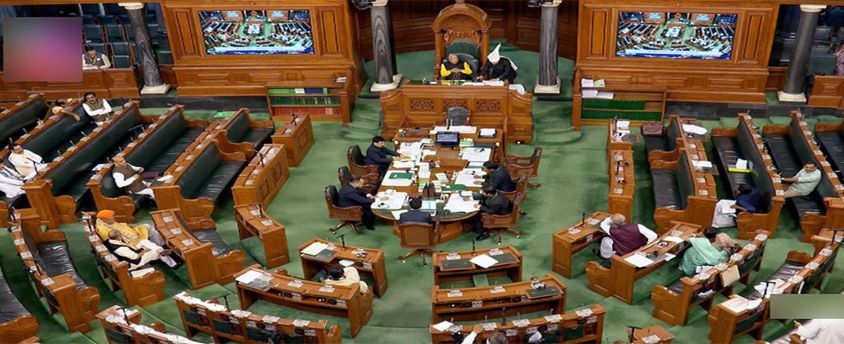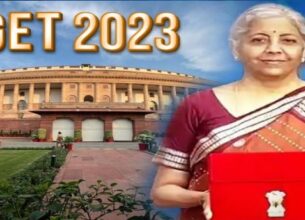Second leg of Budget Session
13, Mar 2023

Prelims level : Budget
Mains level : GS-III Government Budgeting.
Why in News?
- The second leg of the Budget session will commence on March 13, 2023 with the government asserting that its priority is to pass the Finance Bill.
What is Budget?
- Annual Financial Statement is a documents presented to the Parliament in every financial year as a part of the Budget Process under Article 112 of the constitution of India.
- This document comprises the receipts and expenditures of the government of current year, previous year and budget year in three separate parts viz.
- Consolidated Fund of India, Contingency Fund of India and Public Account of India. The government has to present a statement of receipts and expenditure for each of these funds.
- Capital receipt comprises of loans raised by the Government, borrowing from the Reserve Bank of India and loans taken from foreign Governments/institutions.
- It also embraces recoveries of loans advanced by the Government and sale proceeds of government assets, including those realized from divestment of Government equity in PSUs.
Difference between Annual Financial Statement and Budget:
- The term budget is used for several documents together including the Annual Financial Statement. The other documents in budget include Demands for Grants (DG); Appropriation Bill; Finance Bill; Memorandum Explaining the Provisions in the Finance Bill; Macro-Economic Framework Statement; Fiscal Policy Strategy Statement; Medium Term Fiscal Policy Statement; Medium Term Expenditure Framework Statement etc.
- However, Annual Financial Statement distinguishes the expenditure on revenue account from the expenditure on other accounts, as is mandated in the Constitution of India. The Revenue and the Capital sections together, therefore make the Union Budget and that is why, Annual Financial Statements is essentially the Budget of the Government.
Budget Pre Independence:
- Budget was introduced on 7 April 1860 by the East India Company to the British Crown. It was presented by a Scottish Economist and politician James Wilson.
- For the first 30 years, the Budget didn’t have the word infrastructure. It was introduced in the Budget in the 1900s.
Budget Post Independence:
- First Union Budget of Independent India: It was introduced on 26 November 1947. It was present by the first Finance Minister R.K. Shanmukham Chetty. However, it was a review of the Indian economy and no new taxes were proposed. It is to be noted that almost 46% of the Budget or Rs. 92.74 crores were allocated for defence services department.
- Printing of Budget: The Budget was leaked in 1950, following which the government shifted the printing of budget from Rashtrapati Bhawan to a press at Minto Road. In 1980, it was shifted to a government press in North Block.
- Introduction of Hindi: Till 1955, the Budget was presented only in the English language. However, from 1955-56, the Budget documents are printed both in English and Hindi.
- First Prime Minister to present the Union Budget: Former Prime Minister Jawaharlal Nehru was the first PM to present the Union Budget for the FY 1958-1959. The Union Budget is usually presented by the Finance Minister. Other than Jawaharlal Nehru, Indira Gandhi and Rajiv Gandhi were the only Prime Ministers to have presented the Budget in their respective administration.
- First Woman to present the Union Budget: Former Prime Minister Indira Gandhi was the first woman to present the Union Budget for the FY 1970-71. On 5 July 2019, Finance Minister Nirmala Sitharaman became the first full-time woman Finance Minister on India.
- Maximum Union Budgets by a Minister: Former Finance Minister Moraji Desai presented the Union Budget a record 10 times, followed by former FM P. Chidambaram (9), former FM Pranab Mukherjee (8), former FM Yashwant Sinha (8), and former FM Manmohan Singh (6)
- Black Budget: For the FY 1973-74, the Budget was presented by the then Finance Minister Yashwantrao B. Chavan and is called as ‘Black Budget’ due to high budget deficit of Rs 550 crores– the maximum until that time. The Budget followed the Indo-Pak war of 1971 and failed the monsoon season.
- The Epochal Budget: The Budget presented by the then Finance Minister Manmohan Singh for the FY 1991-92 is known as ‘The Epochal Budget’– a budget that changed India forever as it marked the economic liberalisation of the nation.
- Dream Budget: The Budget presented by the then Finance Minister P. Chidambaram for the FY 1997-98 is known as ‘Dream Budget’ as it proposed to lower the tax slabs of personal and corporate taxes.
- The Millennium Budget: The Budget presented by the then Finance Minister Yashwant Sinha for the FY 2000-01 is known as ‘The Millennium Budget’– revolutionised India’s IT sector.
- Change in time: In the year 2001, Finance Minister Yashwant Sinha changed the time for the presentation of Union Budget from 5 p.m. to 11 a.m. on the last working day of February.
- Merging of Budgets and Change in date: In the year 2017, the Rail Budget was merged with the Union Budget. Also, since the said year, the Budget has been presented on 1 February following the changes introduced by the then Finance Minister Arun Jaitley.
- Gift Tax: Former Prime Minister Jawaharlal Nehru introduced the Gift Tax in the FY 1958-1959 Budget to make tax evasion more difficult.
- Goods and Services Tax: On 28 February 2006, Goods and Services Tax was introduced by the then Finance Minister P. Chidambaram in the Budget.
- Longest Budget speech: Former Finance Minister Arun Jaitley holds the record for delivering the longest Budget speech in 2014– 2.5 hours.
- Bahi Khata instead of a briefcase: In the year 2019, Finance Minister Nirmala Sitharaman replaced the standard Budget briefcase with the traditional ‘Bahi Khata’ with the National Emblem.
- Paperless Budget: For the first time in Independent India’s history, the Budget for the FY 2021-22 wass paperless.
Budgeting process in India:
- The procedure for presentation of the Budget in and its passing by Lok Sabha is as laid down in articles 112—117 of the Constitution of India, Rules 204—221 and 331-E of the Rules of Procedure and Conduct of Business in Lok Sabha and Direction 19-B of Directions by the Speaker.
- The Budget goes through six stages:
- Presentation of Budget.
- General discussion.
- Scrutiny by Departmental Committees.
- Voting on Demands for Grants.
- Passing of Appropriation Bill.
- Passing of Finance Bill.
Presentation:
- The Budget is presented to Lok Sabha on such day as the President may direct.
- Immediately after the presentation of the Budget, the following three statements under the Fiscal Responsibility and Budget Management Act, 2003 are also laid on the Table of Lok Sabha:
- The Medium-Term Fiscal Policy Statement;
- The Fiscal Policy Strategy Statement; and
- The Macro Economic Framework Statement.







